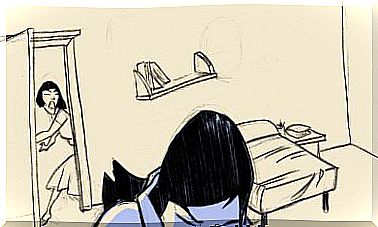Illich’s Law: The Threshold Of Negative Productivity

Illich’s Law states that after spending a certain number of hours at work, productivity begins to decline significantly. More specifically, this law refers to a “negative productivity threshold”, a point at which we start to have trouble maintaining our attention and we begin to chain errors.
The issue of productivity has been an important point of interest for researchers. The world of work has historically been organized on the basis of economic and political objectives. However, we who are part of the production are also human beings. This human factor has not always been taken into account and, ultimately, is a determining factor of economic productivity.
Questions about the best ways to achieve the highest productivity have given rise to multiple theories that take this human factor into account. A factor that encompasses the potential and limitations of cognitive abilities or the value of motivation, for example. Thus, Illich’s law, among others, was formulated.
Ivan Illich, creator of Illich’s Law
The creator of Illich’s Law was an Austrian thinker named Ivan Illich. He rose to fame when he published his book “A Society Without Schools”, in which he made a strong criticism of the education system. He has always promoted self-study as a means of training and conversation as a tool to encourage analysis.
In 1980, Ivan Illich formulated the law that bears his name. He was a professor at Pennsylvania State University and, after several studies, came to a conclusion which is expressed as follows: “ After a certain number of hours, the productivity of the time spent first decreases and then becomes negative ”.
It is the basic text of Illich’s law. In other words, what this thinker argues is that continuous work for many consecutive hours ends up not being productive. In other words, working longer is not linearly associated with higher output. In fact, it is the opposite: excessive working hours can lead to saturation which leads to a total blockage.

Illich’s law
The key, according to Illich’s Law, is to properly organize work and rest times. Let’s illustrate this with an example. A person produces a pair of shoes in two hours. But if he works 12 hours, he won’t produce six pairs of shoes. After a certain period of time, its performance begins to decrease until it becomes zero.
It is therefore likely that at the end of the day, it will produce only 4 pairs of shoes out of the 6 planned. What took him 2 hours at the beginning, will eventually take him 3, then 4. It is also likely that products that will be produced after a long period of work will be more prone to errors or defects.
With intellectual work, the situation can be more critical. But in physical and intellectual work, restless work releases mental fatigue that reduces abilities. If it lasts for a long time, emotional symptoms of anxiety, depression, irritability, etc. also appear.
To work efficiently
In order not to reach a very high point of fatigue, according to Illich’s law, it is best to constantly alternate work and rest. To this end, Illich proposed the existence of “time boxes”. These “boxes” collect and describe ways to organize time so that performance is as little as possible affected by fatigue.

The three main time boxes are:
- 2 minute break every 10 minutes of work. Although it seems to be very short, this time box has proven to generate great efficiency. In ten minutes, if the load is not too heavy, all cognitive abilities regain their maximum performance.
- 5 minutes break every 25 minutes of work. It is a productivity band which corresponds to the well-known technique called Pomodoro. It is the most popular and many people recommend it after trying it.
- 12 minutes of rest for every 12 minutes of work. This is a time box that has proven to be very effective for very mechanical or very unmotivating tasks.
Since we are used to working long hours, it can be difficult at first to apply these time boxes. It’s just a quesiton of habit. If you apply them, you will quickly become familiar with them. A good idea is to work one day as you are used to, and then assess your productivity. The next day, apply a box of time and do the same. Then compare the two results. You will be surprised.










